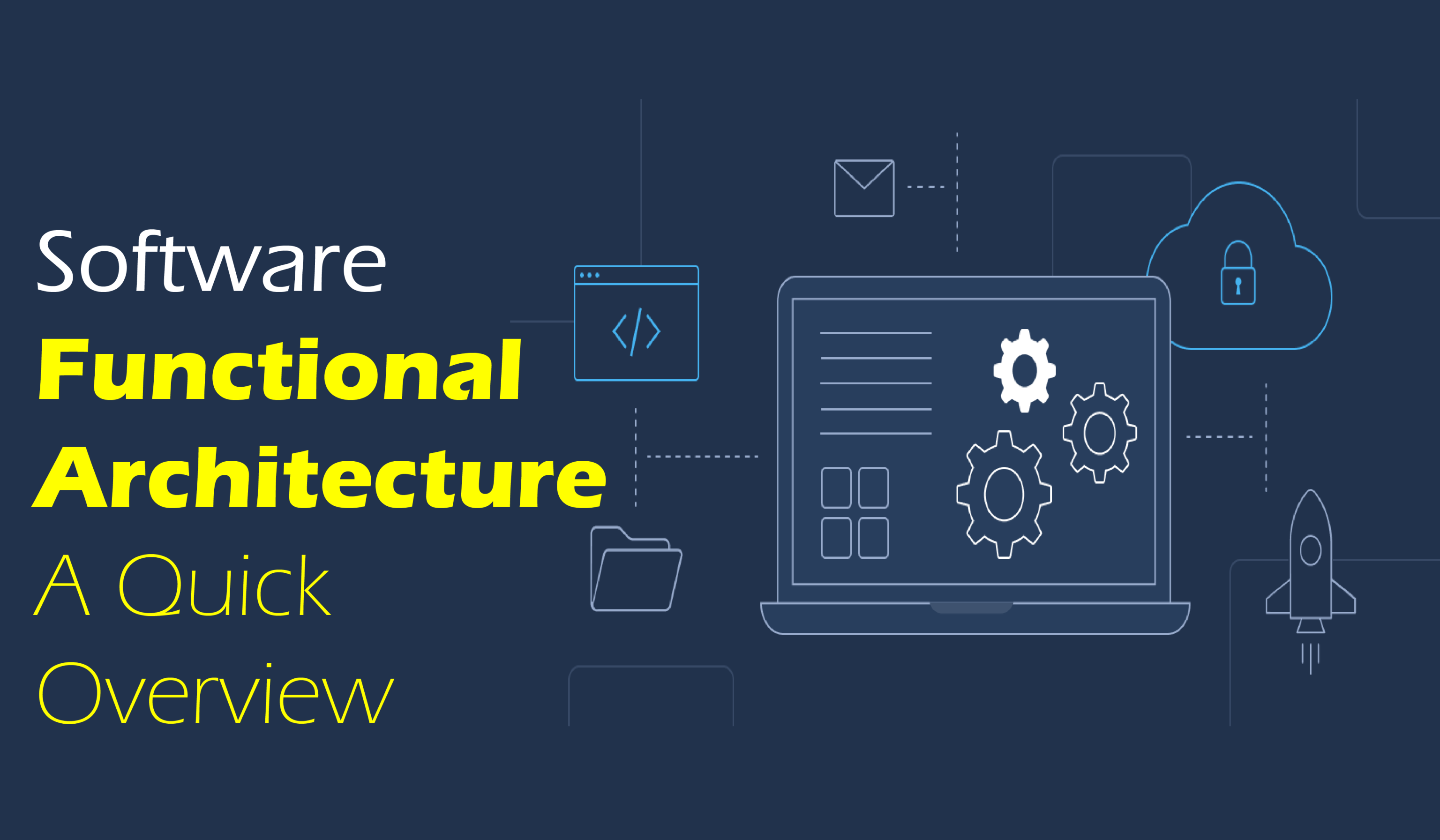Software functional architecture serves as a blueprint of a system, defining how each of the system components works and interacts. It helps developers plan, design, and build a system that meets user expectations.
Whether it’s a simple web application or a large banking system, functional architecture supports you to ensure every part of the system is working perfectly and meets user needs.
This article provides a quick overview of the key aspects of software functional architecture, observing its importance and identifying its core components.
Let’s get started.
What is Functional Architecture in Software Development?
Let’s start by understanding what the functional architecture is all about.
Functional architecture is a software design approach that uses functions as the building block of the system. It’s the fundamental building block for a software system, defining the behavior and interaction of components within a structured functional hierarchy.
Functional architecture focuses on creating modular, composable, and reusable code that primarily interacts through the functional paradigm. This approach ensures your system relies on pure functions and immutability and has no side effects.
Functional architecture provides you with a powerful tool, allowing you to quickly and easily identify the core components of the system along with their behavior and connection. It’s not just a way to organize a system, it’s also about making the system easier to understand, more adaptable, and better maintenance.
Importance of Functional Architecture
Now that we understand what the functional architecture is. It’s time to observe the key reasons why it’s important in software design.
Predictable Behavior
Functional architecture is built on functions, producing the same output given by the same input without any side effects. Functions are operated independently in Functional architecture. This consistency makes the system predictable and makes it easier to identify and fix errors.
Enhance Performance
Functional architecture briefly illustrates how the system components interact, allowing you to evaluate system performance in different situations and make changes to improve system efficiency. It also helps you to navigate the areas of the system that need to be modified. This lets you ensure a seamless user experience.
Scalability
To build a system that scales smoothly without any interruption, it’s crucial to select the right architecture. When scalability is the priority, functional architecture is best for you. Functional architecture lets your system handle rapidly increasing traffic and user requests without system failure. Functional architecture provides you with the ability to add or remove system components and identify necessary improvements, ensuring the system is ready whenever it comes next.
Maintenance
For any system, maintenance is essential to ensure a great user experience. Functional architecture improves system maintainability by providing a clear picture of system components, and describing how the components interact and share information. It also helps you to identify potential design flaws and security risks before they become an issue.
System Security
Functional architecture allows you to identify potential security vulnerabilities and take necessary actions to protect the system. Functional architecture clearly defines how the system works and lets developers identify the source of potential security risks and implement the correct security measurements to keep the system safe and secure.
Major Components of Functional Architecture
The functional diagram consists of 4 major components. Let’s explore them.
Functions:
Functions are the heart of the functional diagram. They represent the core operations or tasks that the system must execute to achieve an objective. Imagine an e-commerce application–one of the key functions could be calculating the total price of items in the shopping cart.
Components:
Components are like containers, holding the system functions in a group. Components can be physical entities or software modules. For example, in an e-commerce application, a cart can be a component that holds all the functions related to cart management such as price calculation, quantity, etc.
Interfaces:
Interfaces are the connectors that define the relationship between components, illustrating how they interact and share information. Understanding these interfaces is essential for ensuring smooth communication and data sharing within system components.
Dependencies:
Dependencies highlight the relationship between functions and components, determining the order of execution for the elements. Dependencies help to identify potential bottlenecks and critical issues within the system.
Wrapping Up
That’s all for this topic.
Software functional architecture is an essential tool for designing complex systems where numerous functions need to work perfectly. By using functional architecture, you can easily scale and maintain the system, ensuring the system operates seamlessly and is capable to adapt growth.
In any software architecture, modeling is the crucial step to creating a well-organized software system. Tools like inno.navi can supercharge software modeling workflow, visualizing software architecture documentation according to the C4 model in just a few minutes.
If you have any questions or need any further assistance, feel free to contact us. We’ll be happy to assist you.


